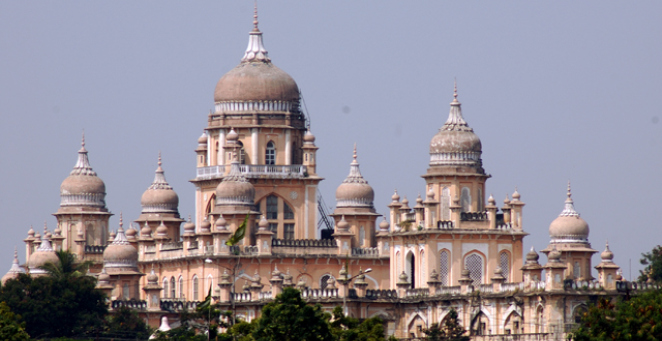After the demolition of the old Secretariat building, the KCR government has finally decided to take up the demolition of the century-old Osmania General Hospital heritage building and the construction of a new facility.
As a first step, the heritage building has been seized and the authorities have asked the business establishments to vacate the premises.
The move to seize the building comes nearly five years after Chief Minister K Chandrasekhar Rao visited the hospital in 2015.
OGH is housed on 27 acres of land near Afzalgunj and the old heritage building is housed on 2.37 acres. After his visit in 2015, the CM had found that the building was unsafe and announced that his government would demolish the crumbling building and construct a new hospital.
However, the Chief Minister’s proposed move to demolish the old OGH building had hit a roadblock after Opposition parties and heritage activists opposed the decision. The heritage activists halted the move to demolish the old building contending that it was a heritage structure by approaching the High Court. Majlis-E-Ittehadul Muslimeen (MIM) president Asaduddin Owaisi had also opposed the demolition of the old building of the Osmania General Hospital. The KCR government had to buckle under the pressure and put the proposal in cold storage.
Since the last one week, the Telangana Government Doctors Association (TGDA) members launched a protest seeking demolition of the old OGH building.
After Gandhi Hospital, the OGH is the second biggest hospital in the state to treat COVID-19 patients. When rains lashed the city last week, the hospital’s ground which houses Covid-19 patients was inundated with ankle-length water posing grave risk to patients as well as their attenders.
Rain waters inundated ground floor wards at the OGH and forced employees to relocate Covid-19 patients. Thick blankets of water entered the entire ground floor of the heritage block in OGH. Corona virus patients were forced to share isolation wards with the dead at the OGH. Six wards, including an ICU, all of which are on the ground floor, were flooded, forcing patients to take refuge on their beds. There were reports that 15-20 patients were forced to share space with two bodies for over seven hours in one of the wards in the OGH. Hospital management admitted that the building was not the ideal place to deal with an infectious disease, especially not one that spreads as easily as COVID-19.


































